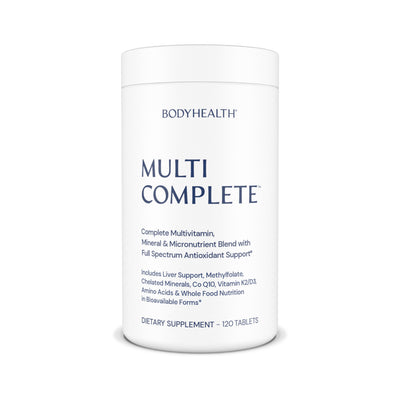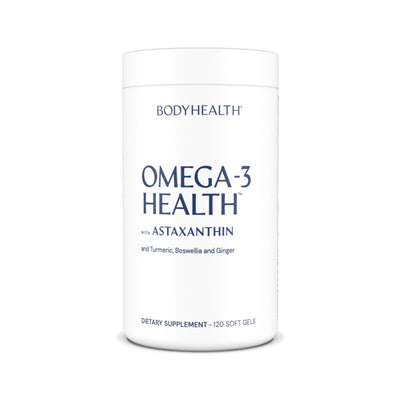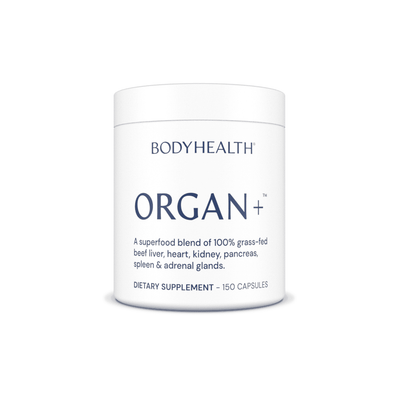How To Improve Growth Hormone, Testosterone & Protein Synthesis
March 28, 2024 6 min read

In the last article we covered cortisol, a hormone which, among other things, acts to break down our muscle, breaking down the proteins in it into amino acids, and then converting them energy sources such as sugar and body fat.
At the same time, it holds onto body fat and acts to raise body fat levels, while also preventing protein synthesis for new muscle growth.
But it also lowers key muscle building and fat loss hormones such as testosterone, growth hormone and IGF (our major fat burning hormone)
So let’s cover what those are and how to maximize their production and use within the body for best results.
BUILDING LEAN MUSCLE: TESTOSTERONE & HUMAN GROWTH HORMONE (HGH)
Growth Hormone (GH or HGH) is a key hormone that helps us build muscle and burn fat.
Your muscles are made of cells that have been fused together into muscle fibers. And on the outside of these fibers are what are known as satellite cells.
When you work out, you injure the cells in these muscle fibers, creating microscopic tears in the fibers themselves.
Your body is then forced to repair or replace these damaged cells, as well as add to them to build muscle so that future damage doesn’t occur when lifting that heavy again.
That’s how we build muscle.
But the way your body does this is key here.
When these cells have been injured after a workout, your body releases specific hormones: Growth Hormone, Growth Factors (other hormones) and Testosterone.
These hormones are what instruct the satellite cells to start replicating to both repair and replace damaged cells in the muscle, and also to add more cells to increase muscle size.
As the cells require amino acids to replicate and repair, these hormones tell the cells to take in amino acids to build new muscle cells.
So we see an increase in growth hormone during the workout and then a drop right after it.
This is one reason we say to take PerfectAmino 20-30 minutes before a workout. We want the amino acids in the blood stream so they can be immediately used when growth hormone is released.
This is how PerfectAmino helps prevent muscle loss. Immediate repair.
We then see GH released again at night, usually during the first 2-3 hours of deep sleep, and then surge again about 15-18 hours after the initial workout, whether you work out again the next day or not.
But growth hormone does even more.
It works with your thyroid to help regulate your metabolism for efficient energy usage, helping to prevent fat storage.
It stimulates the uptake of amino acids throughout your body to repair bones, ligaments, tendons, nerves, skin and, really, most every cell in the body.
In fact, the release of growth hormone not only stimulates the use of amino acids, and increases hunger for more protein when necessary, but consuming protein or amino acids itself stimulates the release of growth hormone so these amino acids can be used.
Growth Hormone has even been called the “anti-aging” hormone as, if it’s low, raising it, along with protein, can bring one’s overall body health back to earlier, “younger” levels, “reversing” aging to a degree.
But it also stimulates the release of something else very important for fat burning and keeping our bodies lean.
FAT LOSS & LEAN MUSCLE: INSULIN-LIKE GROWTH FACTOR (IGF)
There’s a hormone called Insulin-Like Growth Factor (IGF), and its primary job is the releasing of energy for use between meals.
Much like the hormone glucagon, IGF instructs cells to break down glycogen (sugars stored in our liver and muscle cells) for energy.
When those are tapped out, IGF stimulates the burning of fat for energy.
But while glucagon is released when blood sugar levels drop, IGF is mainly released when growth hormone is released, and only on an empty stomach.
IGF also regulates cell growth, particularly nerve cells, something very important, and often overlooked, when we’re putting our body through hell while working out.
Actually, one main reason we try not to work out a muscle group more than every two days at maximum is due to our nervous system, the nerves running through our muscles.
These require longer to heal from the stress we put on them than muscle does. And if we work out the same muscles too often, healing of these nerves can lag behind and cause considerable trouble later on.
SLEEP, GROWTH HORMONE, & INSULIN-LIKE GROWTH FACTOR
While growth hormone and IGF are released any time we work out (as long as there aren’t high levels of insulin or cortisol in our blood stream), they’re released most significantly at night, while we sleep.
The first few hours of sleep, our deepest sleep, is when most of our cellular recovery occurs. And also when most of our fat-burning occurs.
In fact, those who have regularly poor sleep have a harder time recovering from illness, injury, or workouts, or building muscle, as well as a harder time losing fat and keeping it off.
This is for two reasons. First, lack of sleep stimulates the release of cortisol, which prevents fat burning and muscle growth, and suppresses the release of growth hormone, testosterone, and IGF.
But even more, as this is the time for cellular repair throughout the body, this is when growth hormone, testosterone and IGF are released the most.
When we provide our bodies with enough protein and amino acids to use to repair muscles and cells, and then provide them with enough sleep to do this, we get higher levels of these hormones being released to allow the cells to use these amino acids.
And we get higher levels of IGF for fat-burning.
But when we get less sleep, we have less of these hormones being released, so we get less muscle-building and fat loss, while at the same time more cortisol is released, actively adding to fat stores and breaking down muscle.
It’s like a see-saw, with testosterone, growth hormone and IGF on one side, and cortisol and insulin on the other. And sleep is the hinge at the center.
These higher cortisol levels also then act to raise estrogen levels, which adds more fat and rounds our edges, at the same time lowering progesterone and thyroid, two other fat-burning and insulin-lowering hormones.
HOW TO RAISE TESTOSTERONE, GROWTH HORMONE & IGF
So first we need to get sleep.
It seems simple, but it’s truly one of the most important points in muscle building and fat loss, not to mention our overall energy levels, health and mood.
Then we need to ensure we’re consuming enough proteins and amino acids for our bodies to repair the damage done daily, whether through workouts or just going through our normal days.
Then we need to remove anything that raises cortisol levels higher than they should be, such as processed sugars, omega 6 fatty acids from processed foods or non grass-fed meats, and we need to ensure we have proper digestion (improper digestion raises inflammation and cortisol along with it).
Lastly, as these truly do act in a see-saw like fashion, anything that lowers cortisol and insulin, also raises testosterone, growth hormone, and IGF.
Vitamin D, Vitamin E and Omega 3 fatty acids are key here. As well as any other anti-oxidants, which work to lower inflammation, thus lowering cortisol.
We also need magnesium for our muscles and nerves, and electrolytes.
If we keep these things in, while taking our aminos, whole proteins and fat, and working out hard, our testosterone, growth hormone and IGF levels improve and cortisol and insulin lower, allowing for maximum natural muscle growth and fat loss.
I hope this helps.
And if you’re just seeing this and want to know more about building a Lean Body or Leaning Bulking, you can find out more here.
And make sure to join our VIP Group where you can ask any question you have and get only the best answers.
I hope this helps.
Index To The Lean Body/Lean Bulk Guide:
Introductory Articles:
Getting Started:
- The Lean Body/Lean Bulk Guide & 30-Day Challenge
- Hormones: The Third Dimension of Calorie Cutting
- The Lean Body/Lean Bulk Diet
Supplements & Macros By Goal:
- Supplements & Macros For Lean Body
- Supplements & Macros For Beginner To Moderate Lean Bulking
- Supplements & Macros For Advanced Lean Bulking
Workout Regimens & Exercise Videos:
- Beginner to Moderate Level Workout Regimen
- Advanced Workout Regimen
- Lean Body/Lean Bulk Exercise Videos
Week One:
- Metrics & Key Data For Week One
- How BCAAs Build Body Fat & Lower Health Over Time
- The Importance Of Complete Protein Digestion
Week Two:
- Dialing In Our Macros For Lean Muscle: Hormones & Cravings
- How Cortisol Breaks Down Muscle & Prevents Protein Synthesis
- How To Improve Growth Hormone, Testosterone & Protein Synthesis
Week Three:
- Thyroid, Estrogen & Progesterone: Speeding Fat Loss & Lean Muscle Creation
- Improving Sleep: Muscle Building, Fat Loss, Mood & Aging
- Maximizing Cellular Function For Endurance & Recovery
Week Four:
- Raising VO2 Max: Endurance, Performance & Recovery
- How Toxins Affect Our Hormones: Building Muscle & Fat Loss
- Blood Flow For Muscle, Fat Loss & Overall Health
Final Week:
Articles by Health Topic
Your Path To Better Health Starts Here!
From in-depth articles on nutritional benefits to updates on new product launches, stay informed and inspired on your journey to optimal health.
*These statements have not been evaluated by the Food and Drug Administration. These products are not intended to diagnose, treat, cure, or prevent any disease.






